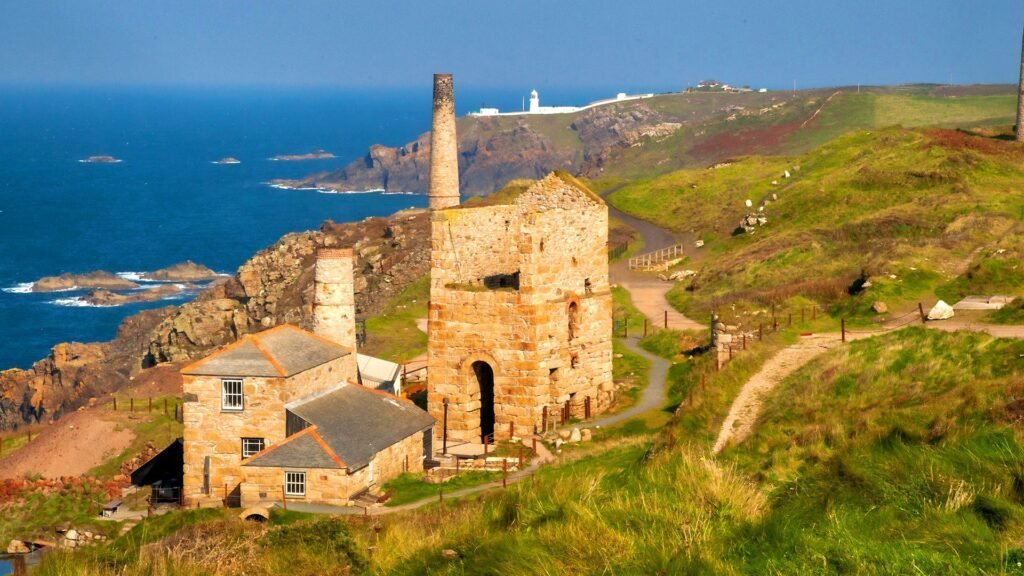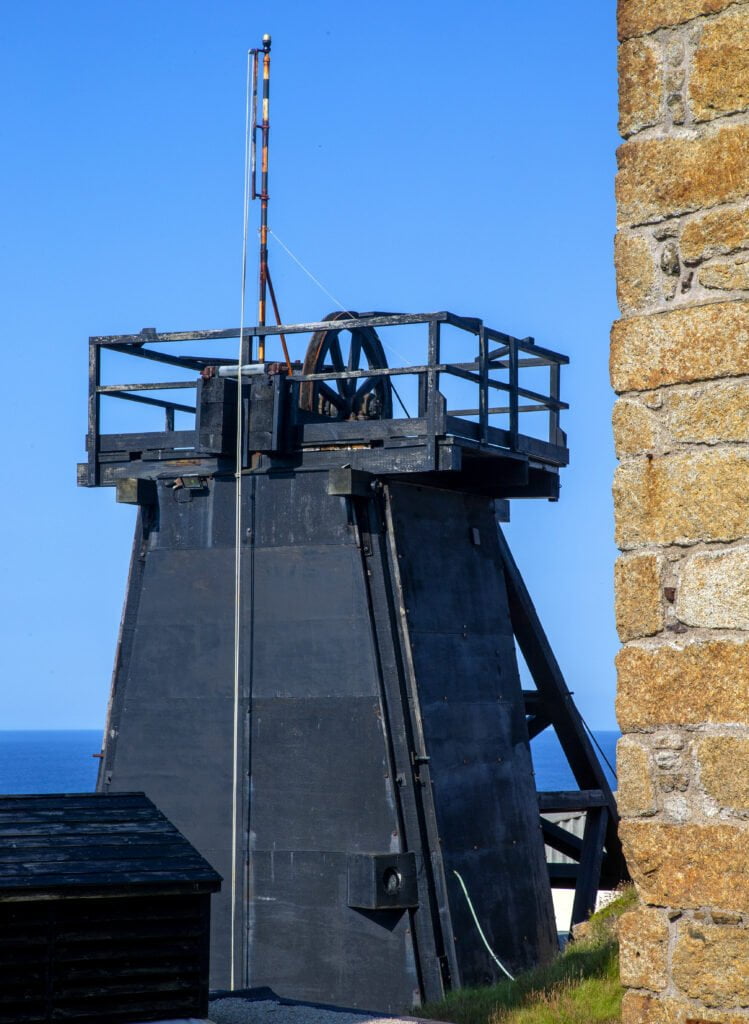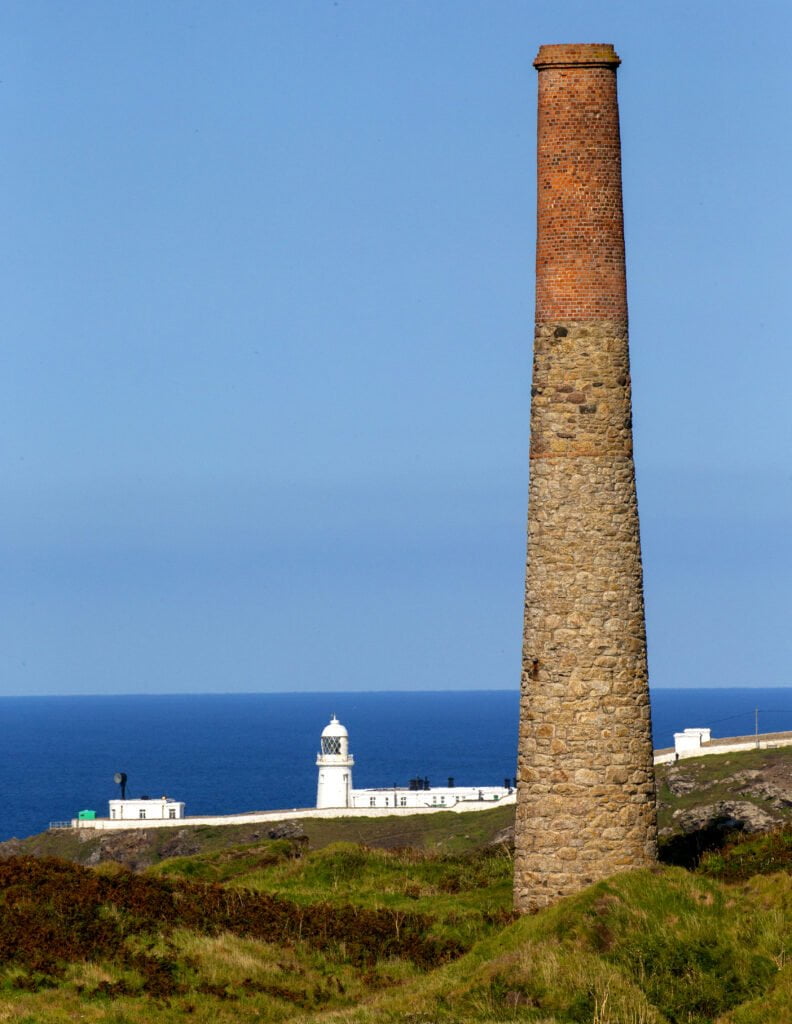
It was nearly 3pm on Monday 20th October 1919, when the man engine at Levant mine on the cliffs near Pendeen snapped and the second greatest tragedy in the history of Cornish mining took 31 men to their deaths.
The man engine first installed at Levant in 1857, was by 1919. an antiquated piece of machinery which had been designed to lift miners up and down the shaft on a long segmented rod on which were fixed a series of steps 12 ft, apart. These corresponded with the sollars or platforms on the side of the shaft which were also 12ft. apart.

Thus, a miner wishing to go down the shaft would wait for the downward cycle of the engine before moving onto one of its steps, getting off onto the sollar platform below and awaiting the next downward stroke of the engine. Ascending was the exact reverse. There were five double strokes per minute. The rate of descent was 60ft. per minute, and the journey up and down the shaft took about 25 minutes. The rod was attached to a nodding donkey type engine at the top of the shaft and it was this connection that sheared on that dreadful afternoon. It was not the first time the man engine had failed. In 1892 and 1908 it had broken without fatalities, but there was a number severely injured. What caused so many deaths this time was the engine breaking as men were leaving the mine in large numbers at the end of the day’s working. The sheer horror of the disaster can be imagined. The man engine was just reaching its upward stroke and miners were about to step off onto the next sollar above. Many of the mine boys saved themselves by being quick to leap onto the platforms. There was a judder that went through the ten tons of humanity on the 1800ft. long pillar of 40ft. wooden beams. A terrible crash followed…. The man engine plummeted, breaking into pieces. Most debris above the 150-fathom level congested at the turn-step narrow in the shaft where miners could step from one side of the man engine to the other. Rescuers came from other mines regardless of religion. A volunteer mine rescue team arrived from East Pool near Redruth, accompanied by the Cam Brea ambulance brigade. Two local doctors attended to the dead and injured. Most casualties came from the top part of the shaft. John Grenfell, luckily on a sollar at the time of the accident, was the first back down the shaft to help in the rescue which was a hazardous job that took over three days due to the dangerous state of the debris in the shaft. One man, Nicholas Thomas, survived 50 hours and was rescued, but he died from the sheer exhaustion of his ordeal as he was brought to the mine’s dry. Willie Lawry, the youngest – and luckiest – lad at 14, after just three weeks at the mine, lay pinned by a corpse for 15 hours until rescuers found him. He needed 38 stitches in a face wound, had 8 crushed ribs and a broken collar bone. No-one above him was found alive. He became a local builder and football referee and many years later appeared in television programmes about the disaster.

By the time the number of dead had reached 31 and 19 injured, the full shock of what had happened had spread through the mining community, and disaster relief funds were set up with the target of £15, 000. Money for the funds came in from many different sources. Penzance gave money, as did the insurers of the mine. The Lord Lieutenant of Cornwall and the Mayor of London sent 100 guineas each, and money came in from other mines and miners. The 75 orphans left in the wake of the disaster were offered places at the National Children’s Orphanage by the Rev. Smith of Newquay. A poem was sold at 2d per copy to help the disaster fund. The first of the funerals took place on the following Thursday, and Friday, and they carried on over the weekend. These were black days for Pendeen and St. Just, some say the blackest ever known. Large numbers of mourners attended. The sorrow and grief were almost palpable throughout the towns as line after black clad line filed into the cemeteries at Pendeen and St. Just, to be followed just minutes later by more grieving families accompanying their loved ones to their last resting places. Inspection of the failed securing collar that had held the rod to the arm of the man engine showed that the metal had sheared off, probably from metal fatigue. The last collar was fitted just before the First World War and was oiled regularly against the severe elements on that exposed cliff top. The failure was accepted as just one of those things that happened in mining, and no-one was found guilty of neglect despite calls from some labour representatives that the man engine was antiquated. The disaster signalled the end for Levant. It was only worked to 150 fathom level afterwards.

Many of the men were sacked and the remainder had to go back to climbing ladders. Levant finally closed in 1929, after 109 years of being worked. Shortly after, the sea broke in around the area known as the Forty Backs. Six hundred tons of concrete were used to seal this breach in 1966, when it was hoped Levant would produce tin again. It was drained to the 40-fathom level but nothing ever came of these attempts. In 1982, the Lord Lieutenant of Cornwall unveiled a plaque at Trewellard Methodist Church in memory of the 31 who lost their lives. Moves are afoot to restore surface Levant to its former glory. Only last year the boiler house was re-built, and the boiler converted to steam by the Trevithick Society. This squat building with its stack at one end stands on the very edge of the seething Atlantic, and is now open to the public daily until 5pm.. It is hard to believe now that men worked in such severe conditions a mile out under the sea. But it is not hard to believe that they did not always return, as happened to those on that terrible Monday afternoon 75 years ago. This quote is taken from a poem written at the time of disaster, which was included in the following leaflet. “St. Just, Pendeen and neighbourhood Will never forget the day When thirty-one poor Miners Were suddenly called away.”
